Best edible flowers: 23 types to pep up your cakes, cocktails, and more
Add a splash of color with our round-up of the best edible flowers – they're a simple way to elevate any culinary creation

Fiona Cumberpatch

A garden is a rich pantry for a cook who knows the best edible flowers to pick. Think peppery orange nasturtiums to give salads fiery taste and color; aromatic lavender to bake in shortbread; crystallized rose petals to decorate cupcakes; and frozen borage blooms – one per ice cube – floating in a glass of Pimm's.
'Rose and orange blossoms have been distilled for centuries in the Middle East to flavor sweets and coffee,’ says Monica Nelson, author of the new book Edible Flowers. 'The Aztecs used marigolds to flavor cacao. Daylily is an important element in Chinese cooking. The practice of eating flowers has ebbed and flowed with the tides of culinary custom, but is today a growing force among restaurants.'
Edible blooms are particularly favored by restaurants that use seasonal ingredients, such as Noma in Copenhagen, which has three Michelin stars. Owner and head chef René Redzepi includes flowers in over 90 of the recipes in his cookbook.
The idea of using flowers in the kitchen might seem alien, but many of us have drunk elderflower cordial, enjoyed baklava pastries flavored with orange blossom, and eaten deep-fried squash flowers. If you've already perused our guide to edible flowers, you'll know that they're a quick and easy way to make food look good and they often add great flavor, too.
'We use edible flowers every day, added to salads, jugs of cordial, or ice cream,’ says gardener Sarah Raven, who sells seeds and plants for growing culinary blooms. 'Life would not be the same without them. They will transform your salads and make your veg garden look wonderful.'
Our top 23 edible flowers for adding a fabulous final touch to food and drinks
It's great fun gathering edible flowers from your own kitchen garden or containers, and – however they are used – they transform summer food and drink with beauty, color, and flavor.
Many garden plants are poisonous, however, so remember that you should always double-check which blooms are safe before picking anything to eat.
1. Bee balm (Monarda)
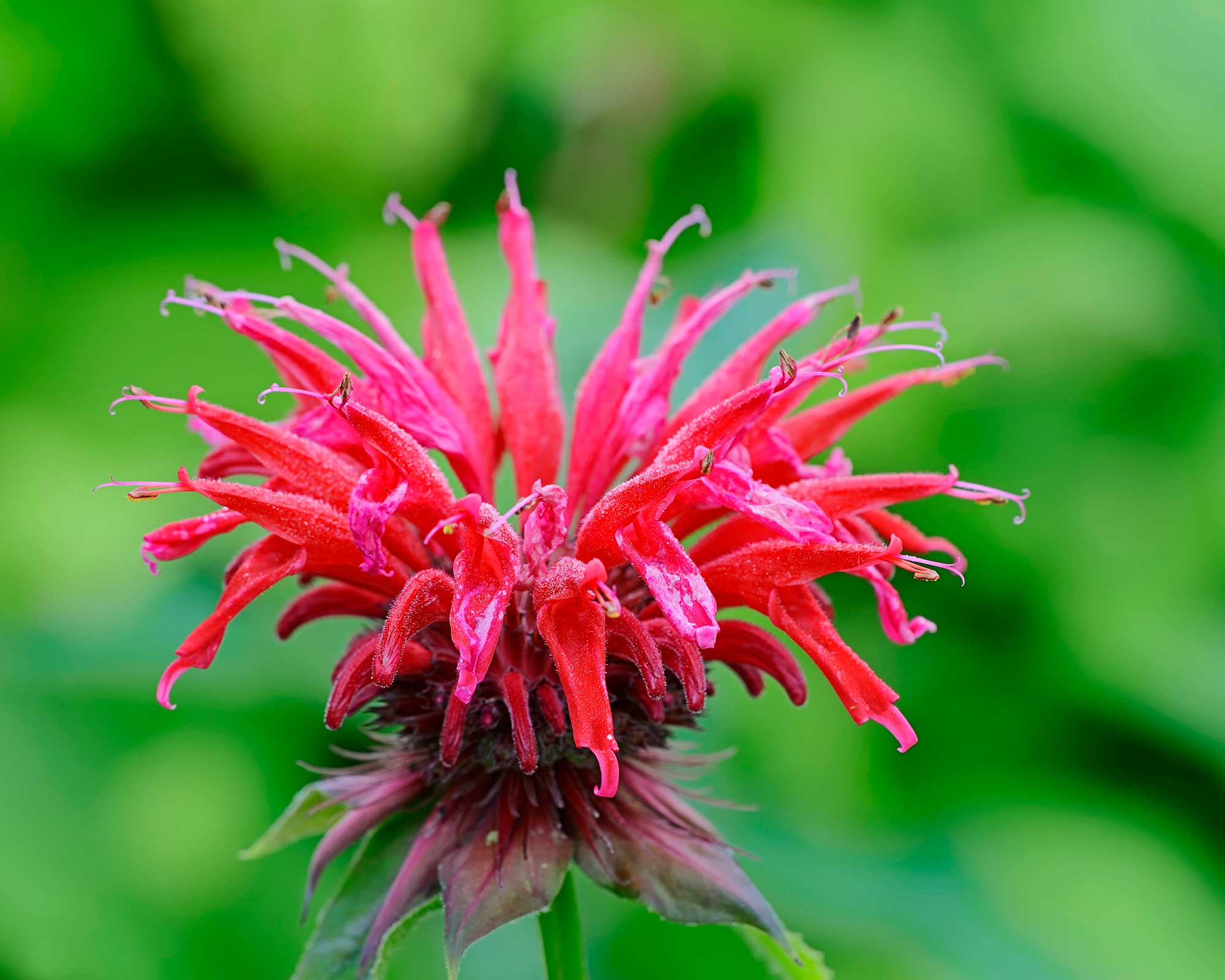
- Height: 3ft (90cm)
- Hardiness: USDA 4–9 (UK H4)
- Flavor: Spice and citrus with a hint of mint
The pink or red petals of bee balm (or wild bergamot) can taste of spice, citrus, or mint.
They complement rice, fish, and pasta dishes, salads, and sauces (such as salsa) and are great added to lemonade, cocktails, or black tea (for an Earl-Grey flavor). Because the taste is strong, only a few petals are needed.
Grow in moist, well-drained soil in sun or semi-shade. A bonus point of bee balm is that it's one of the best mosquito-repellent plants.
2. Daylily (Hemerocallis)
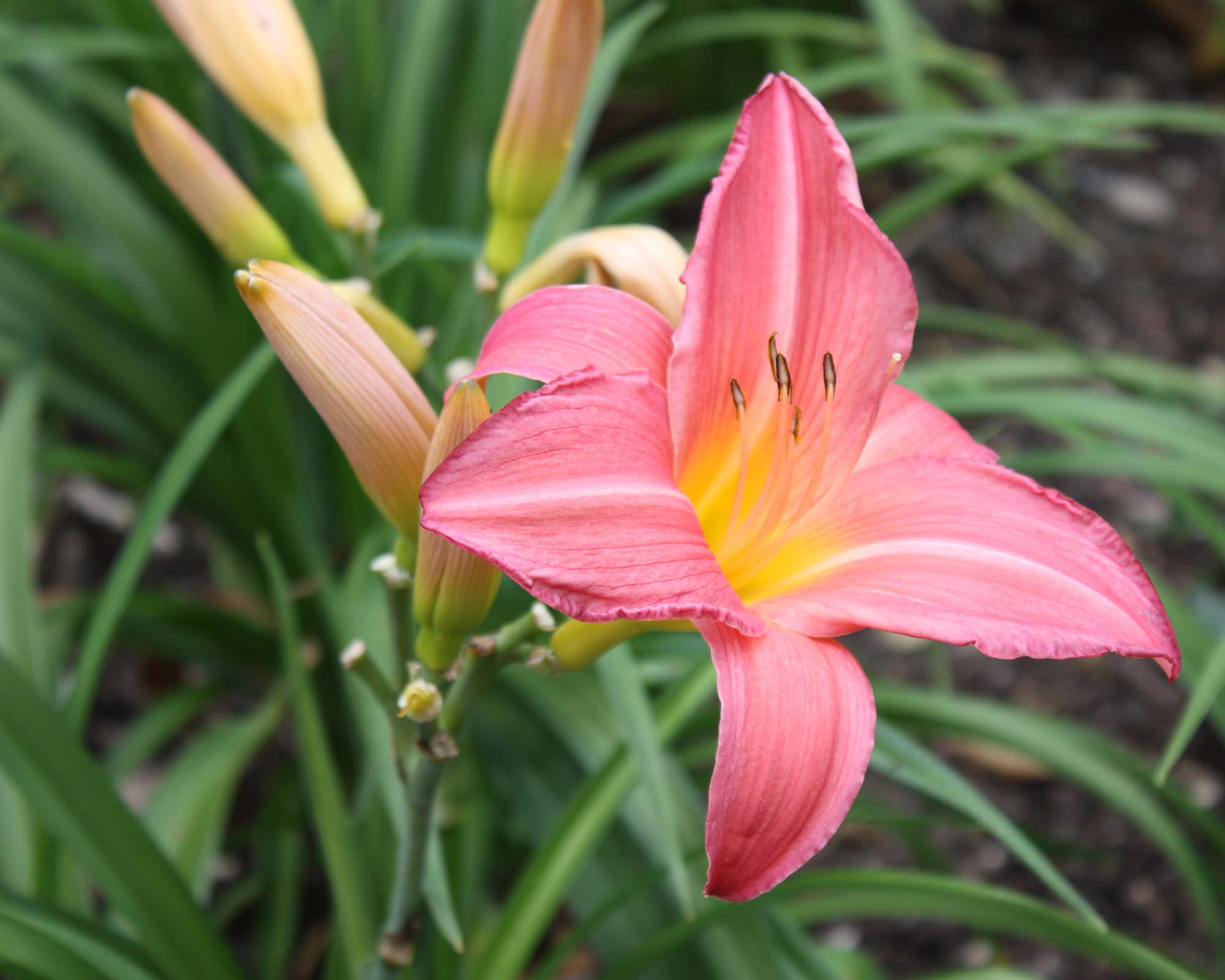
- Height: 18–35in (45–90cm)
- Hardiness: USDA 4–9 (UK H6)
- Flavor: Sweet and bean-like
Eaten for centuries in China, the buds and petals of daylilies are crunchy and juicy with a sweet, bean-like taste.
Stuff the flowers or add the petals to salads, soups, and stir-fries. The pale-colored varieties tend to have a better flavor than the darker forms.
Grow in retentive, well-drained soil in sun. Note that daylilies are not true lilies; true lilies should not be eaten.
3. Squash (Cucurbita)

- Height: 2ft (60cm)
- Hardiness: USDA 2–11 (UK H2)
- Flavor: Mildly sweet
Learning how to grow courgettes and other squashes is easy, and the large yellow or orange flowers are great fun in the kitchen. They have a sweet taste and can be stuffed with cheese (such as ricotta) and baked, dipped in batter, fried, or eaten raw. You can also add them to omelets, pasta, and salads.
Sow under cover in mid-spring or direct in late spring or early summer into rich, retentive, well-drained soil in sun.
4. Cornflower (Centaurea cyanus)
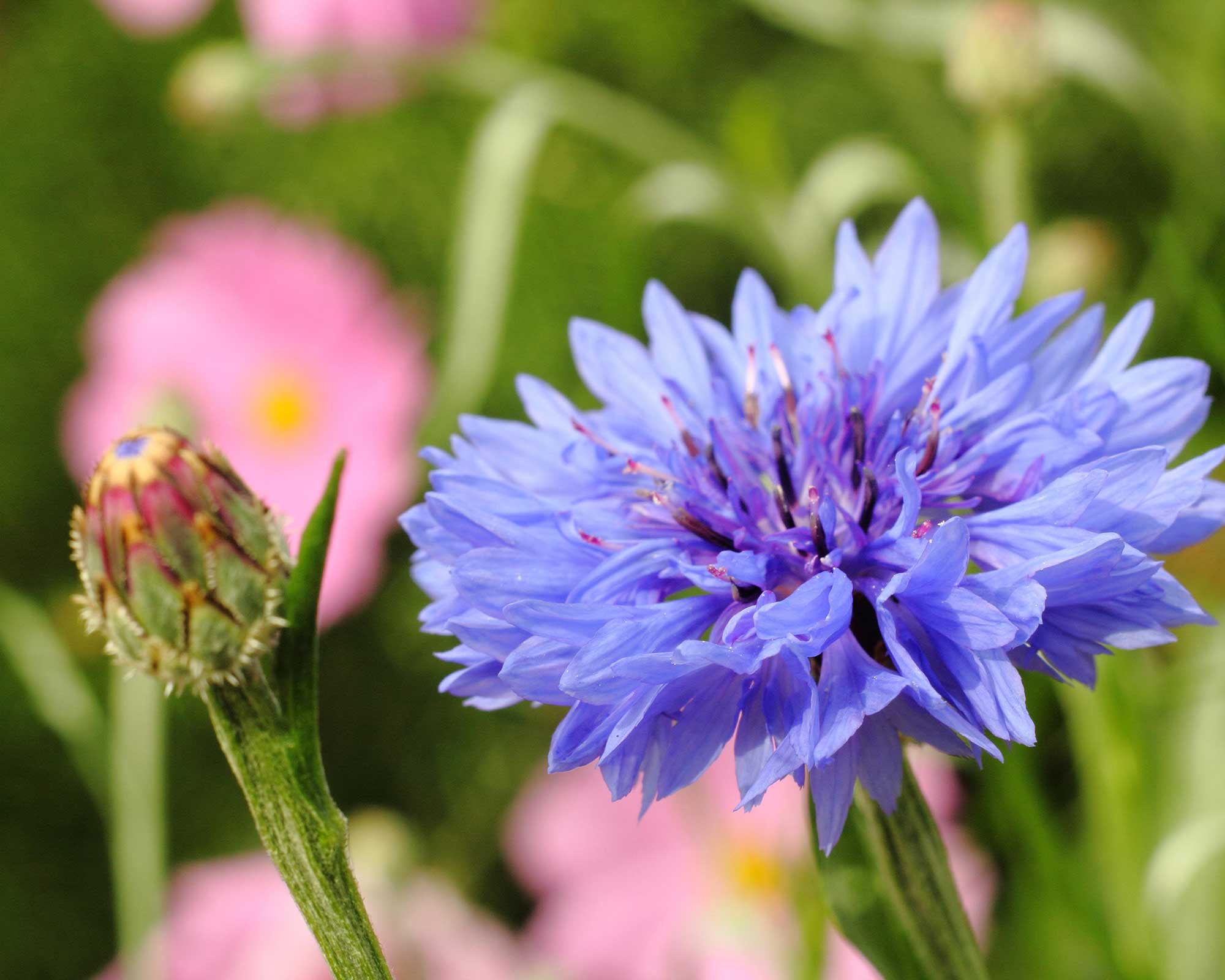
- Height: 2.5ft (75cm)
- Hardiness: USDA 2–11 (UK H6)
- Flavor: Sweet and spicy
The cobalt-blue petals have a sweet, spicy taste and can be sprinkled over salads and cakes, baked in shortbread, or frozen in ice cubes for cocktails.
Sow this hardy annual direct or under cover in spring or autumn for flowers throughout summer. It's a good plant for pollinators, too – bees adore it.
Keep picking for the kitchen or the vase (or deadheading) to maintain flowering.
5. Nasturtium (Tropaeolum majus)
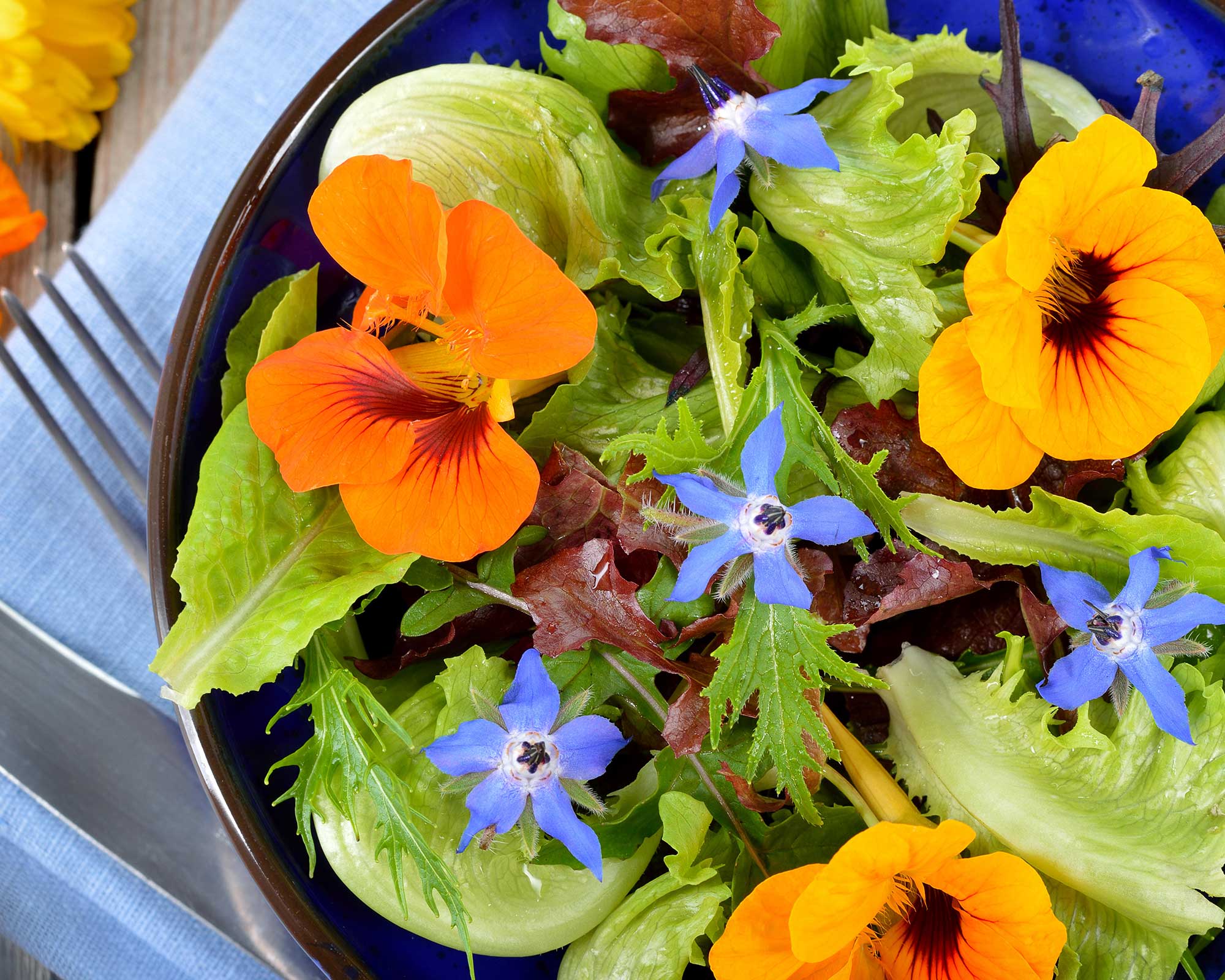
- Height: Up to 5ft (1.5m)
- Hardiness: USDA 2–11 (UK H3)
- Flavor: Peppery
Nasturtiums are so easy to grow from just a few inexpensive seeds – in fact, they're one of our best plants for beginners. And every bit of the plant can be eaten.
They come in a range of colors, from scarlet to zingy orange. The name is said to come from the Latin words for 'twisted nose' – a reference to the effects of their hot, spicy flavor. The flowers taste exceptional in a salad, as do their mustardy leaves. They also work well with pasta, egg, or cheese dishes. The unripened seeds taste like capers, and even the seed pods can be pickled.
There are different types of nasturtiums: some are climbers, some trail and others form mounds of foliage and flowers. 'Milkmaid' is a creamy-yellow trailing plant, 'Baby Deep Rose' forms soft mounds and 'Jewel of Africa' has rich colors on variegated leaves.
They can be sown directly into the ground in spring – they thrive in well-drained soil in full sun. Guard from slugs and rabbits.
6. Pinks (Dianthus)
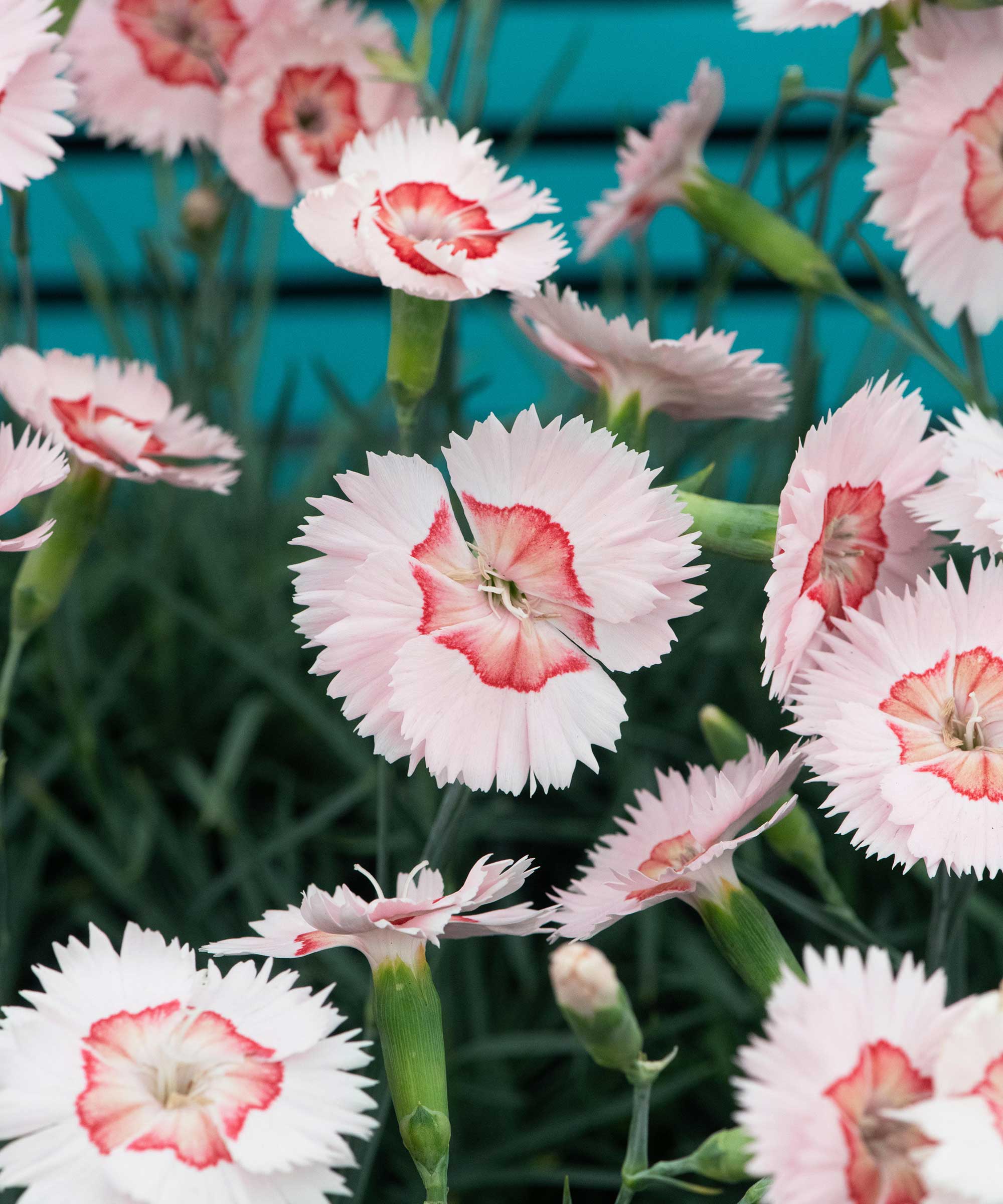
- Height: 10in (25cm)
- Hardiness: USDA 3–9 (UK H7)
- Flavor: Clove-like
The white, pink, or red petals of carnations and pinks (such as D. plumarius) have a sweet clove taste and can be added to salads, crystallized for cake decoration, and used to flavor desserts and jam. Remove the white end of the petals before adding to food, because it tastes bitter.
Grow varieties of garden pinks in very well-drained neutral to alkaline soil in sheltered sun.
7. Jasmine (Jasminum officinale and J. sambac)
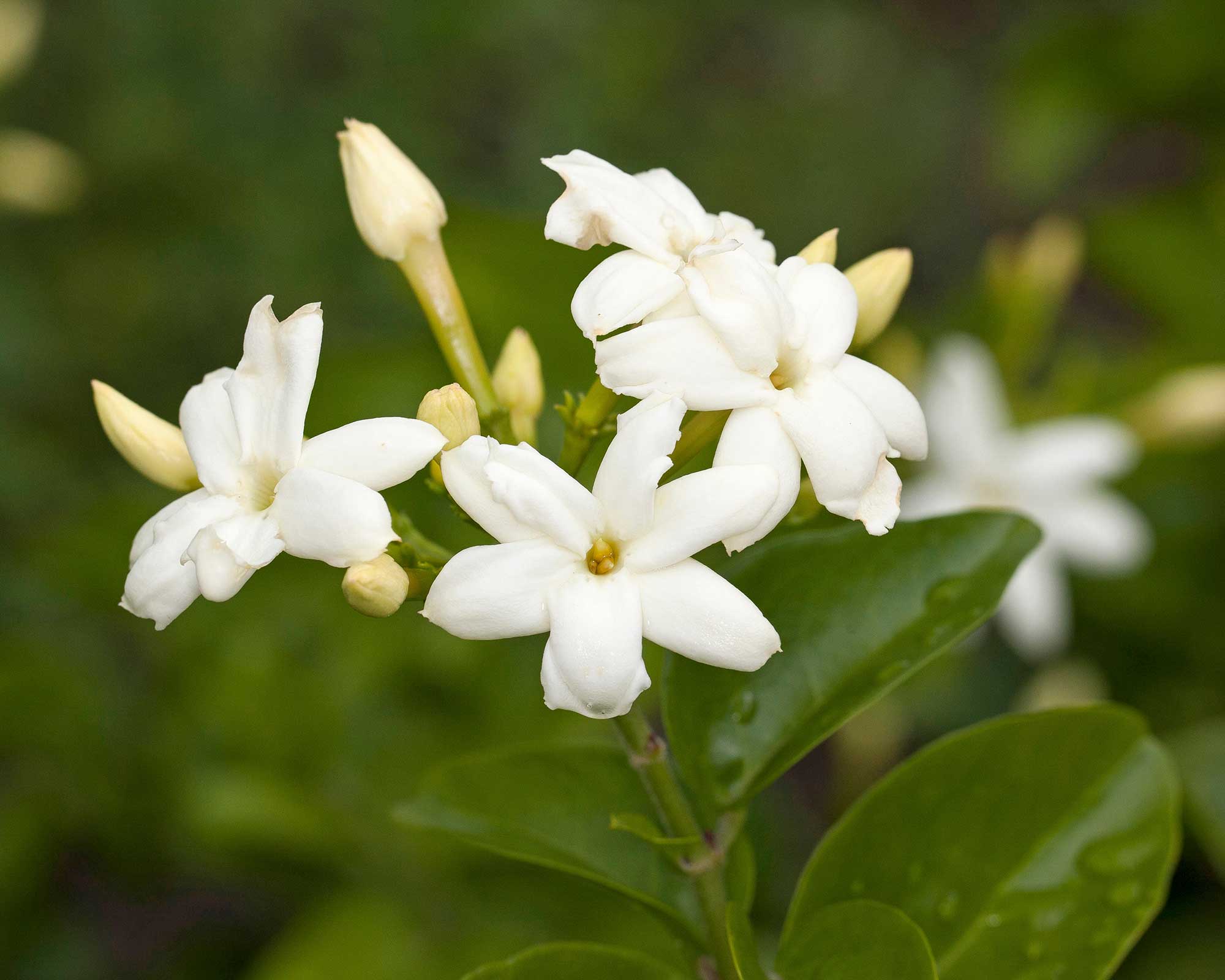
- Height: 13ft (4m)
- Hardiness: USDA 7–10 (UK H5)
- Flavor: Aromatic and floral
The star-shaped, scented white flowers are heaven in green tea. They can be made into a sweet syrup (with sugar and water) or added whole to desserts (such as Persian milk pudding), rice dishes, ice cream, and cocktails.
Grow this climbing plant up a sheltered, sunny garden wall in retentive, well-drained soil. It's important to note that any other types of jasmine are not edible.
8. Lavender (Lavandula)
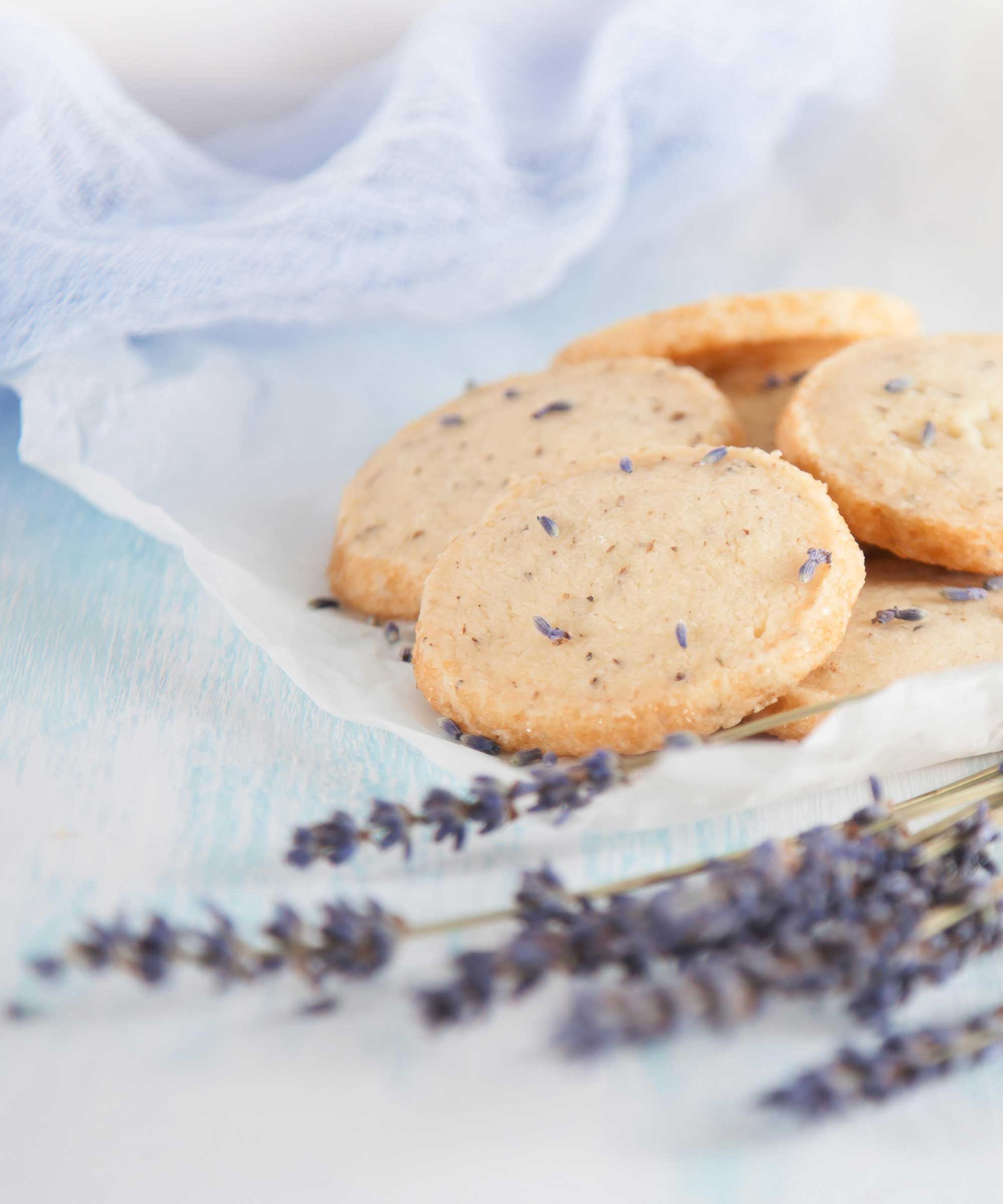
- Height: 2ft (60cm)
- Hardiness: USDA 5–8 (UK H5)
- Flavor: Sweet and aromatic
Elizabeth I drank lavender tea and ate lavender conserve to soothe her migraines. This ancient aromatic herb is said to detox, calm, and relieve headaches.
In the kitchen, the sweet, balmy taste of the purple flowers is delicious in baked goods and can also be used in ice cream. It is also used to flavor meat.
'With their heady perfume, these tiny blooms are ideal for flavoring sugar and pepping up bland biscuits,' says Amateur Gardening expert Lucy Chamberlain. Its floral taste works particularly well alongside citrus notes – think lemon and lavender shortbread, for instance. You don't need much – overdoing it can make a dish taste a little soapy.
The plants like a sunny spot and plenty of drainage, and make a lovely addition to Mediterranean-inspired gardens. You can find all our tips on how to grow lavender in our feature.
9. Elder (Sambucus nigra)
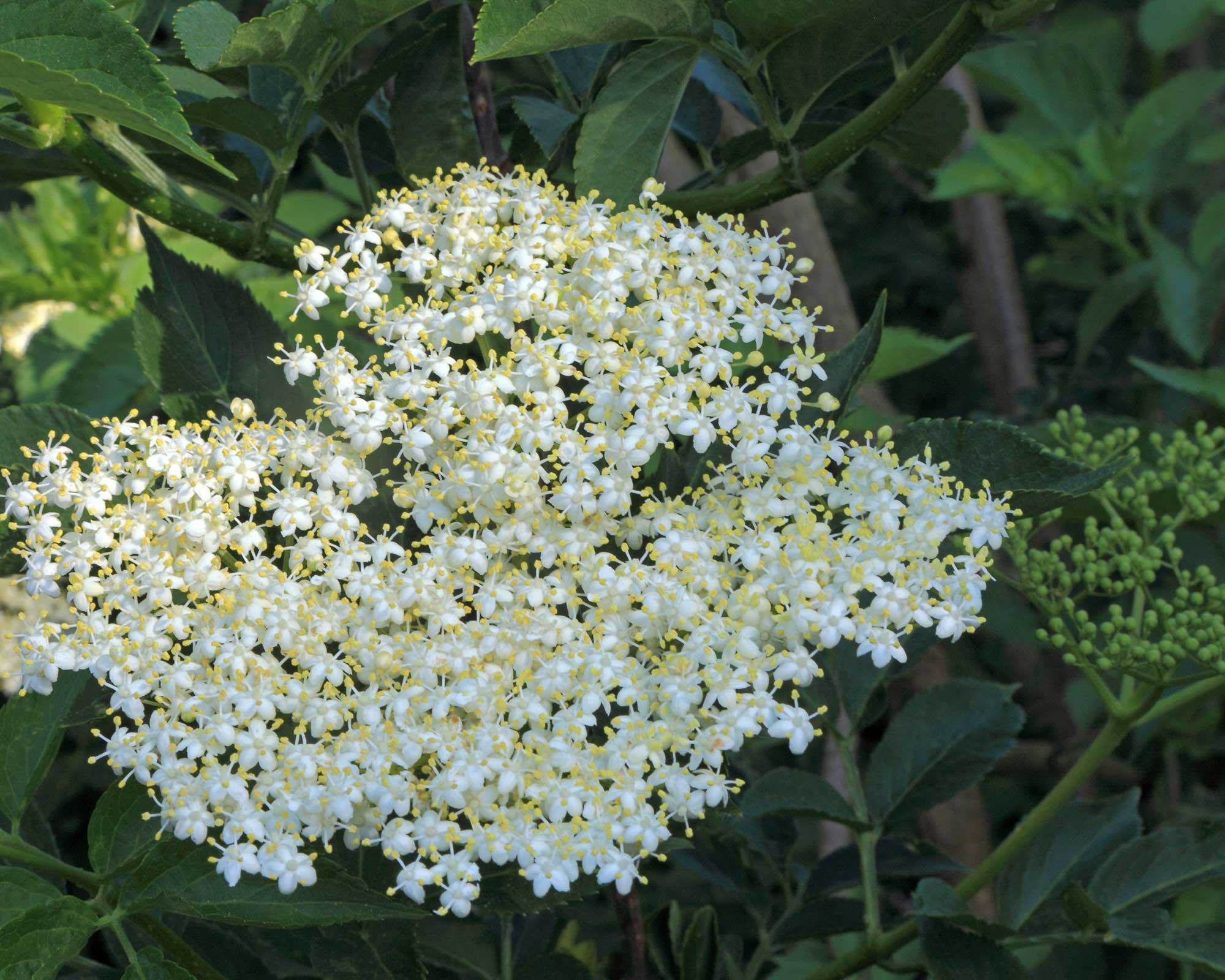
- Height: 20ft (6m)
- Hardiness: USDA 5–8 (UK H6)
- Flavor: Fragrant and sweet
While the leaves and bark of elder are poisonous and the berries shouldn't be eaten raw, the lacy white flowerheads of the elder tree have a pleasant, sweet taste that makes a lovely cordial to flavor water or summer cocktails.
The fragrant blooms also look and taste wonderful fried in batter and dusted with sugar.
Grow in moist, well-drained soil in sun or semi-shade.
10. Basil (Ocimum basilicum)
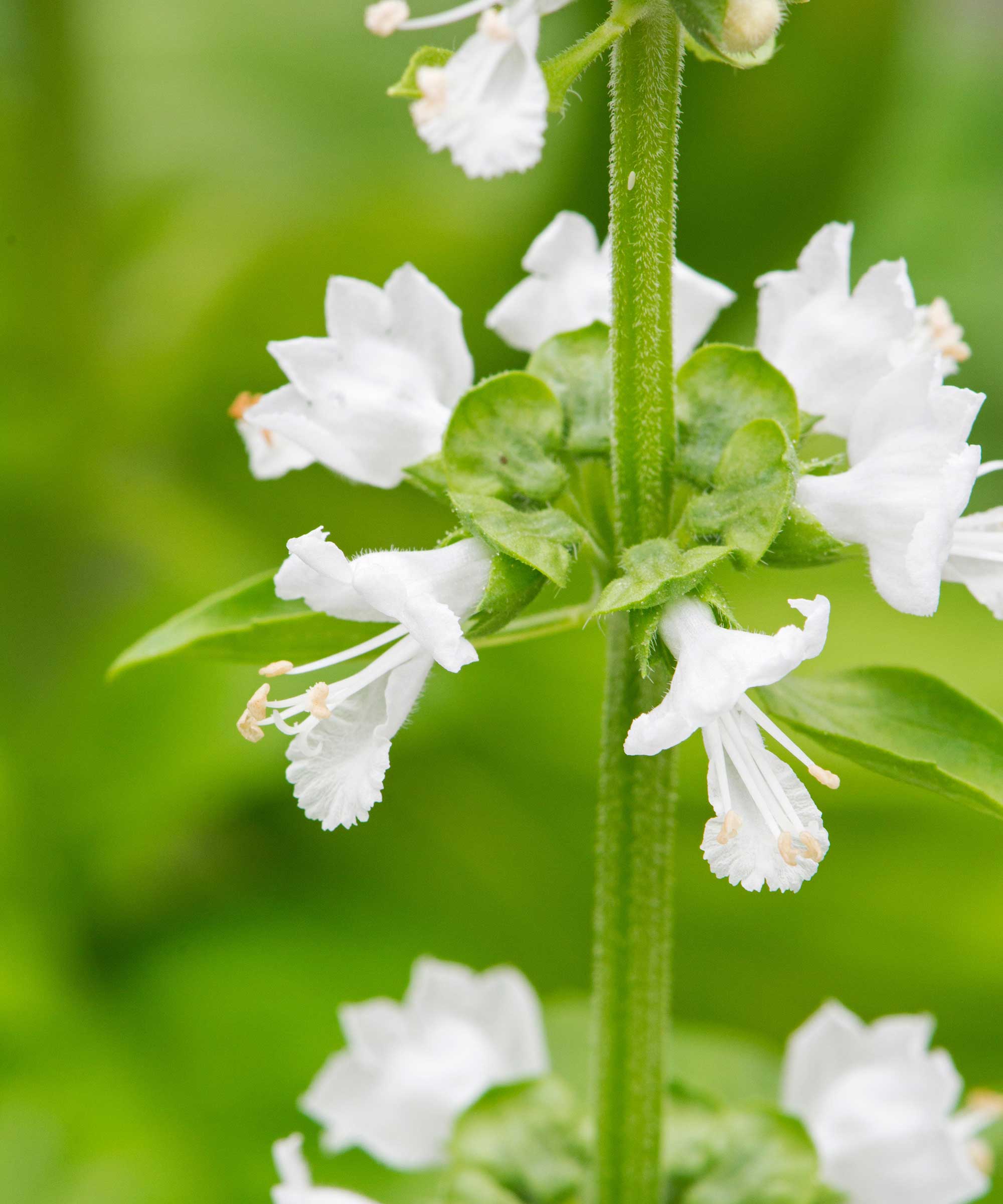
- Height: 18in (45cm)
- Hardiness: USDA 2–11 (UK H1C)
- Flavor: Spicy and fragrant
Basil is always a welcome addition to herb garden ideas. And the white or pink flowers are edible and have a similar pungent, spicy taste to the leaves. Sprinkle over salads or pasta dishes or use them to make pesto.
Sow this herb in well-drained containers in spring or early summer and place them in the greenhouse or on a bright, sunny windowsill. Keep the compost moist, watering in the first half of the day if possible.
11. Marigold (Tagetes and Calendula)
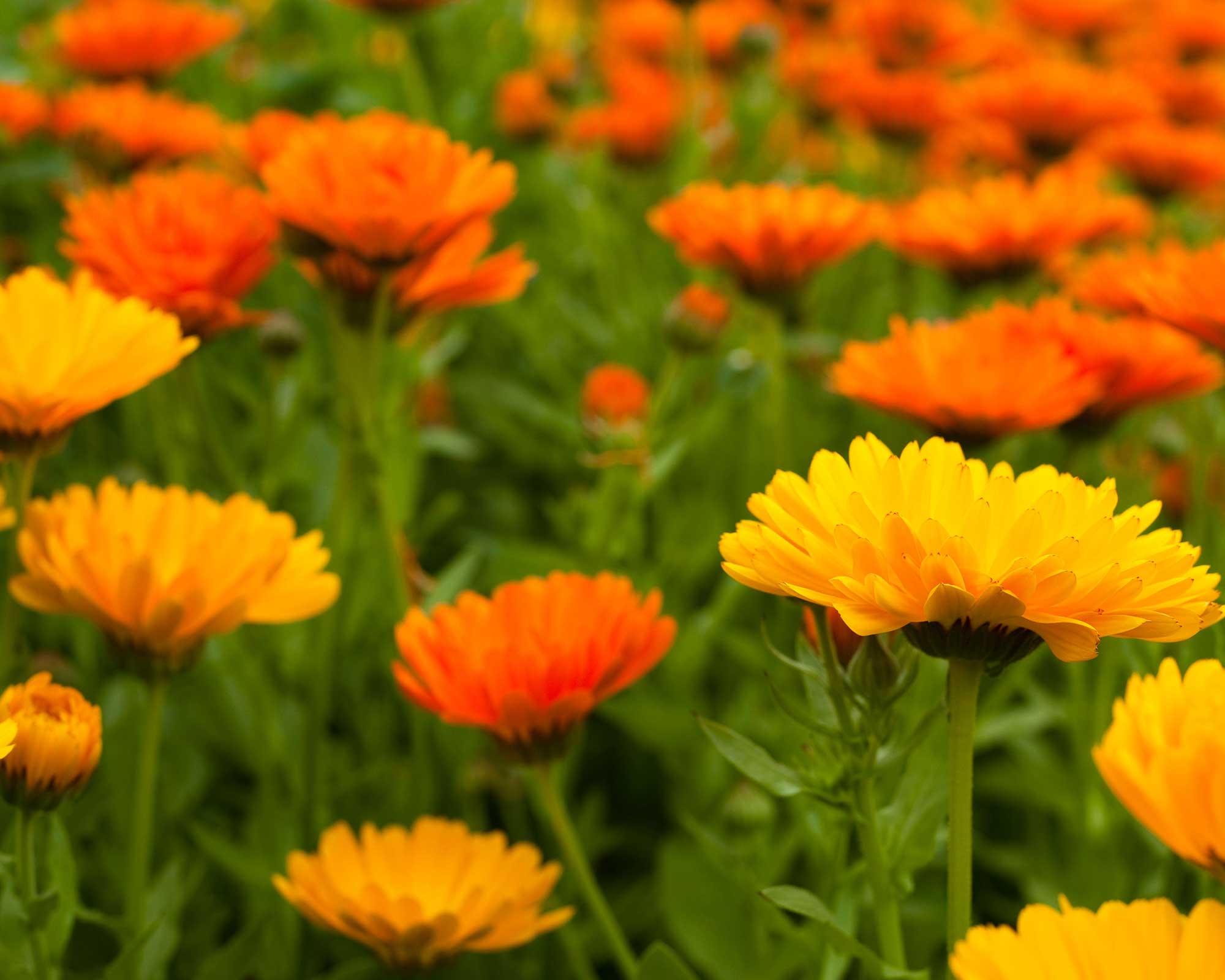
- Height: 12in (30cm)
- Hardiness: USDA 6–10 (UK H4)
- Flavor: Bitter citrus
Add fiery color and a bitter, citrus taste to dishes with the bright orange or yellow petals of T. patula, T. tenuifolia, or C. officinalis. They can be sprinkled onto salads, pasta, or rice dishes, and also work well in cheesecakes and scones. Calendula can also be used as a colorant substitute for saffron.
They're one of the easiest plants to grow from seed, whether you sow them directly into the ground in the autumn, or start them off on the window ledge in early spring and then transfer them outside when the risk of frosts has passed.
Go for the best-known orange ones, or try something different: 'Snow Princess' is pale and creamy, while 'Touch of Red Buff' has dusty pink petals with toasted brown tips.
You can learn more about how to grow marigolds with our guide.
12. Pansy (Viola)
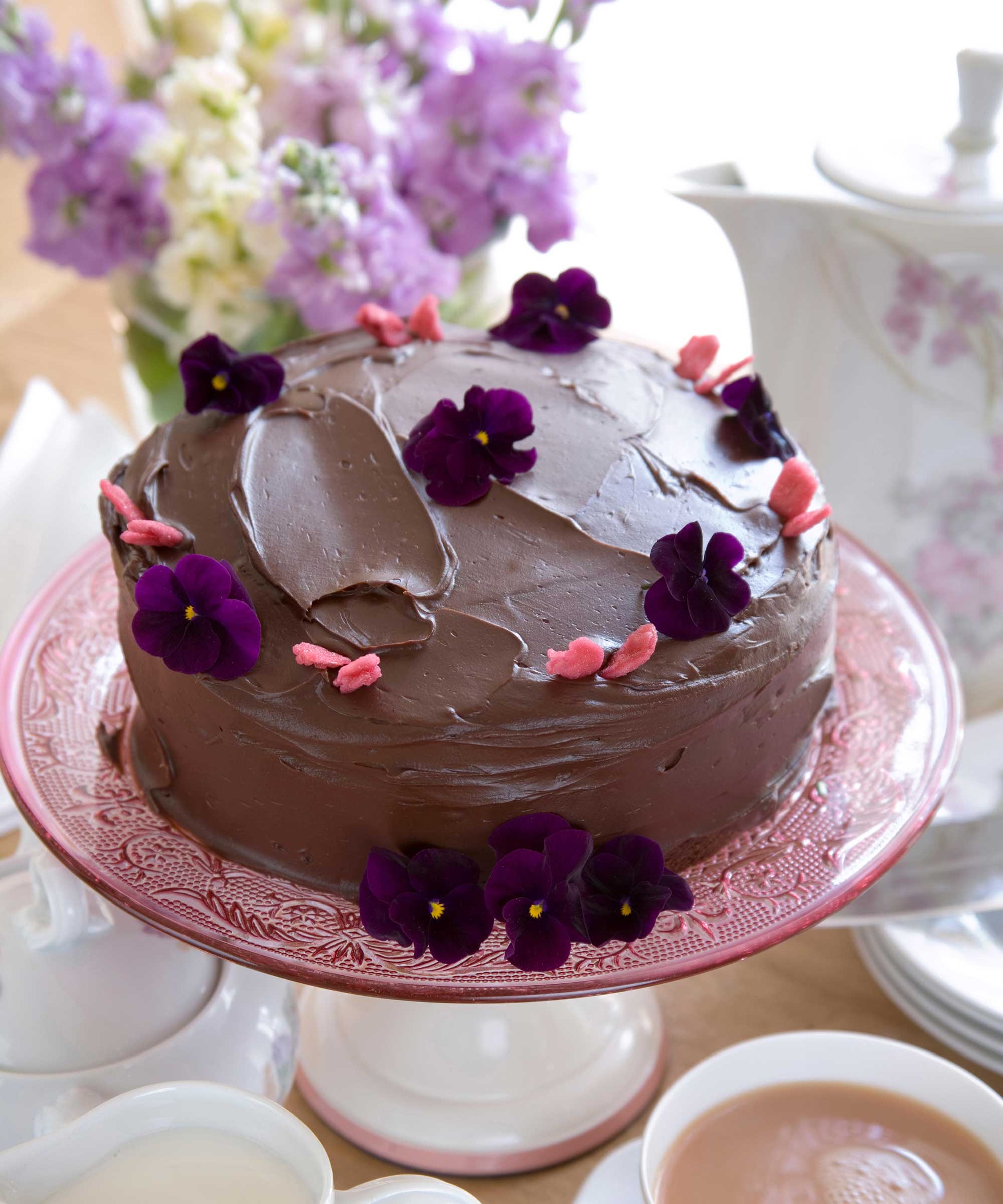
- Height: 6in (15cm)
- Hardiness: USDA 4–9 (UK H7)
- Best for: Mild and grassy
One of the best flowers for decoration, pansies (such as V. tricolor and V. x wittrockiana) have a mild, grassy, lettuce-like flavor.
Available in a range of colors, they prettify salads and other dishes. Gently press them into the icing of a cake or crystallize them to decorate desserts.
Grow in well-drained pots in sun or semi-shade. Pick or deadhead to maintain flowering. These delicate flowers also look lovely for spring window box ideas or in a hanging basket.
13. Primrose (Primula vulgaris)
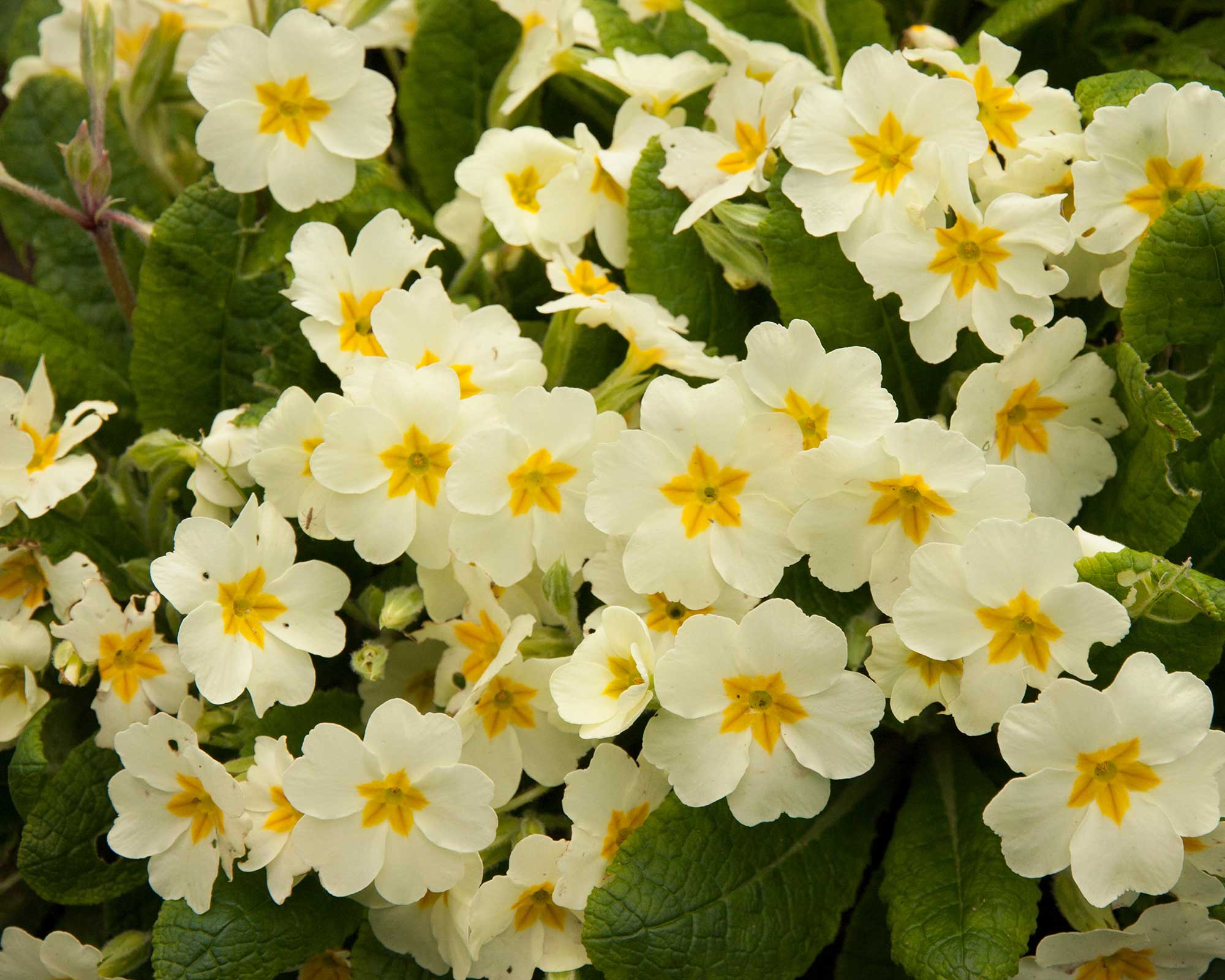
- Height: 6in (15cm)
- Hardiness: USDA 4–8 (UK H7)
- Flavor: Mild and sweet
Primroses are one of the best woodland plants, and their lovely pale-yellow flowers that open throughout spring have a mild, sweet taste.
Add them to salads or crystallize them to decorate cakes and desserts. They can also be used to make tea or wine.
Grow in moisture-retentive, well-drained soil in dappled semi-shade. They will naturalize in the right conditions.
14. Sweet violet (Viola odorata)
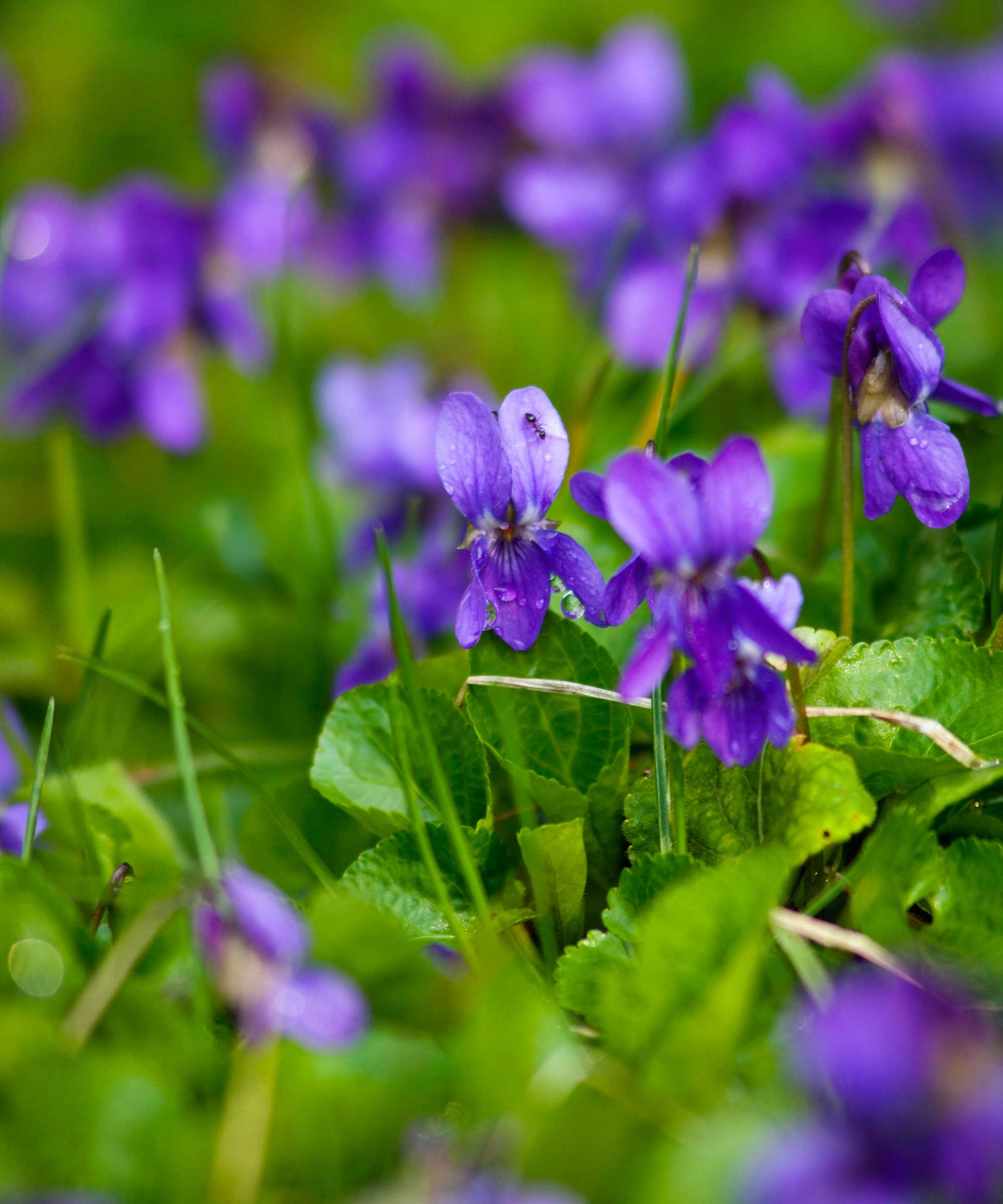
- Height: 3in (7cm)
- Hardiness: USDA 4–8 (UK H6)
- Flavor: Floral
In spring, the true flower of St. Valentine can be plucked to use in baking. The purple flowers have a heavenly floral scent and taste that can be enjoyed in cakes, desserts, and ice cream, as well as cocktails. They can also be crystallized and used for decoration.
Grow in retentive, well-drained soil in sheltered shade or semi-shade.
15. Lilac (Syringa vulgaris)
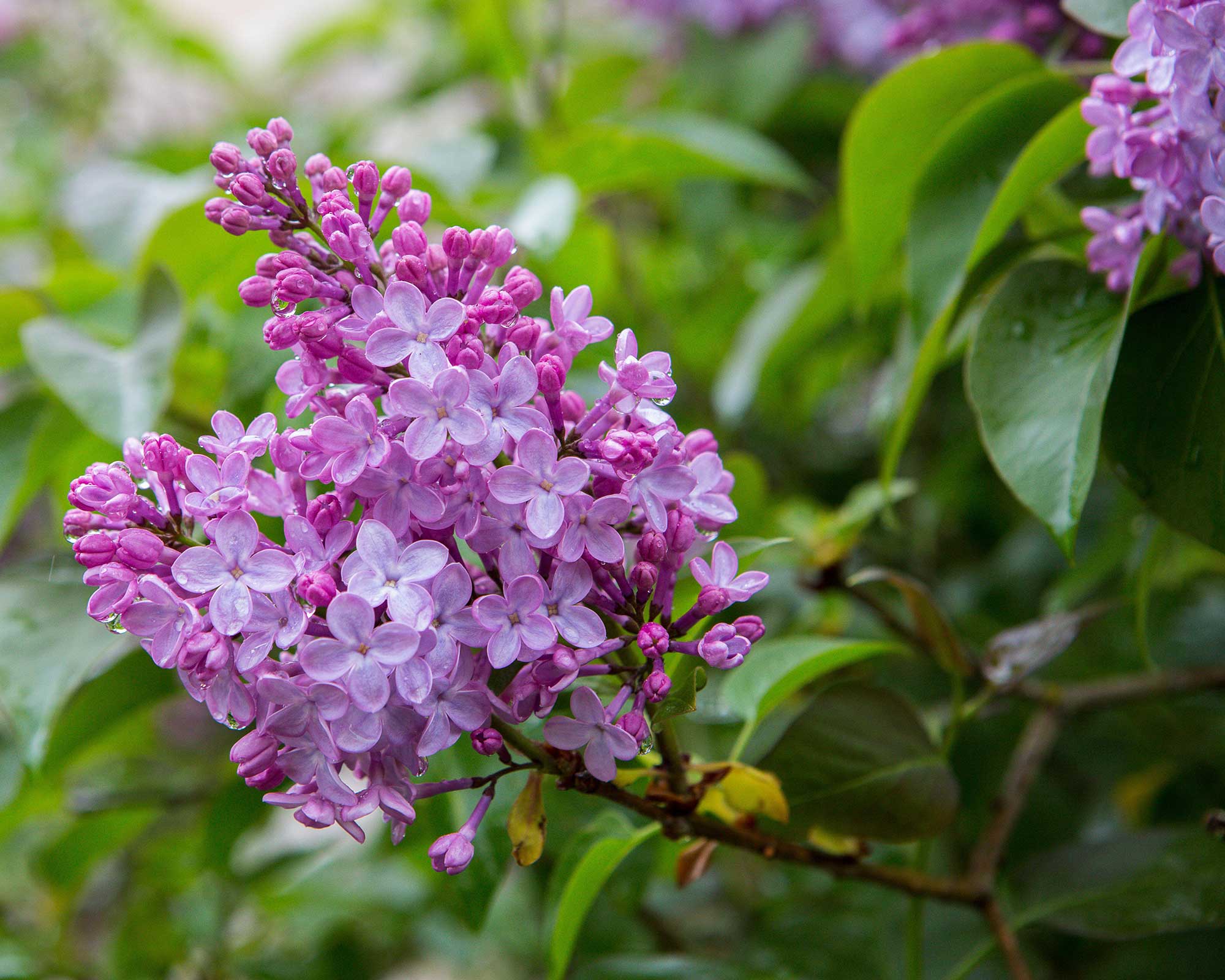
- Height: 12ft (3.5m)
- Hardiness: USDA 3–7 (UK H6)
- Flavor: Bitter citrus
The beautifully-scented purple flowers of the lilac tree bloom in late spring and have a slightly bitter, citrus, floral taste.
They can be used to make or garnish cakes, desserts (such as cheesecakes and meringues), lemonade, and cocktails.
Grow this deciduous small tree or large shrub in well-drained, fertile neutral to alkaline soil in sun or semi-shade. Our lilac care and growing guide has more helpful tips.
16. Dahlias
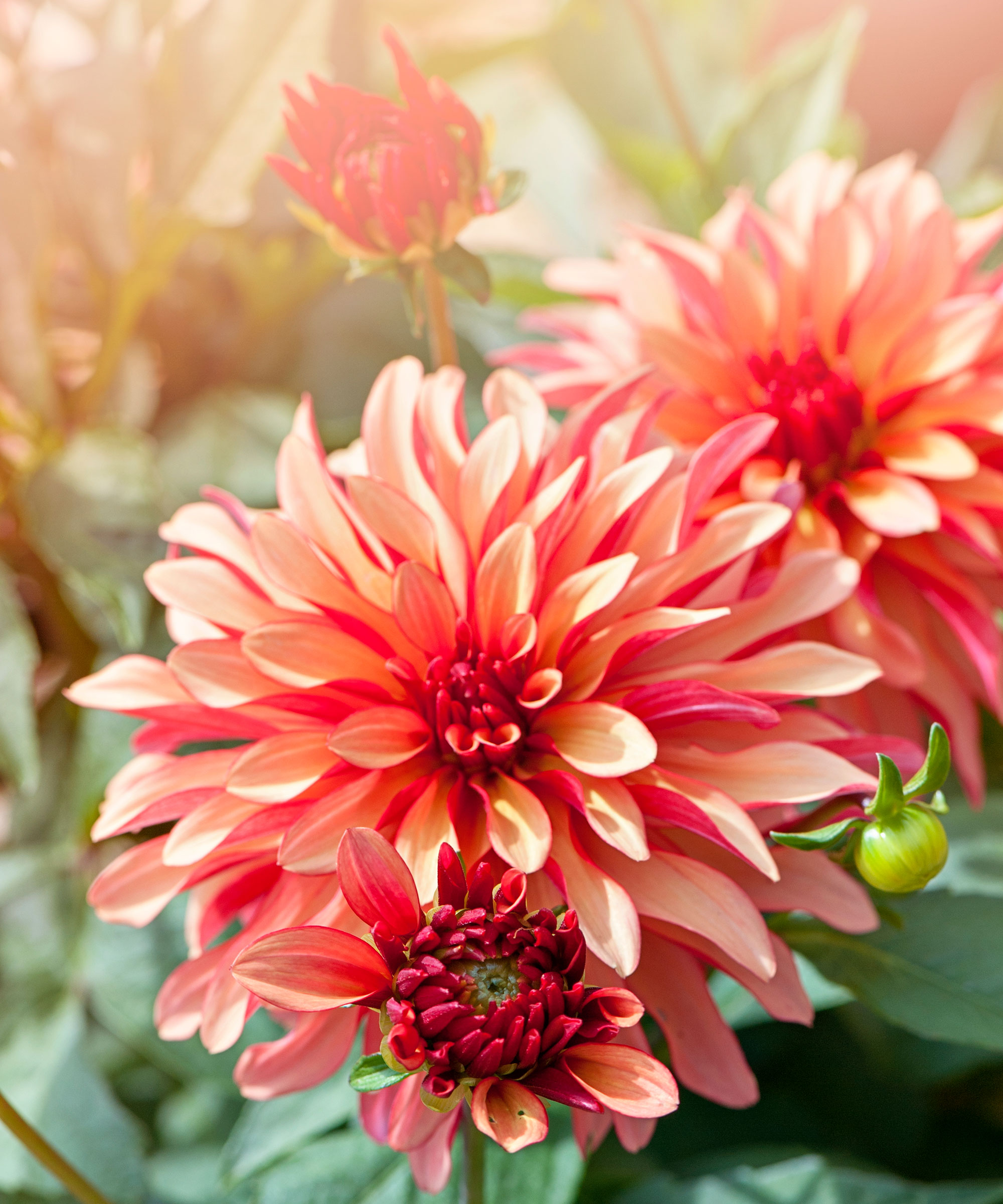
- Height: 1ft–5ft (30cm–1.5m) or more
- Hardiness: USDA 6–11 (UK H3)
- Flavor: Spicy and acidic
Dahlias are famous for their beauty as a cut flower in shades of crimson, caramel, pink, and orange, but less well known as one you can eat. However, dahlia petals are delicious chopped into salads, where they will add a subtly spicy-acidic flavor. Or, they can be used decoratively to scatter over the top of a homemade cake.
It's certainly worth learning how to grow dahlias – as well as prettifying food, they're a stunning flower to have in your garden. Dahlias grow from tubers (which are also edible and may be eaten like a root vegetable), and once planted, they should come up year after year if the soil is not too soggy.
They can either be planted in containers or in borders, at about 7.9–9.8in (20–25cm) deep, in a spot in full sun. Add some fertilizer when planting, as these plants are hungry. The more flowers you cut, the more you get, and they will keep going until the first frosts.
17. Honeysuckle (Lonicera)
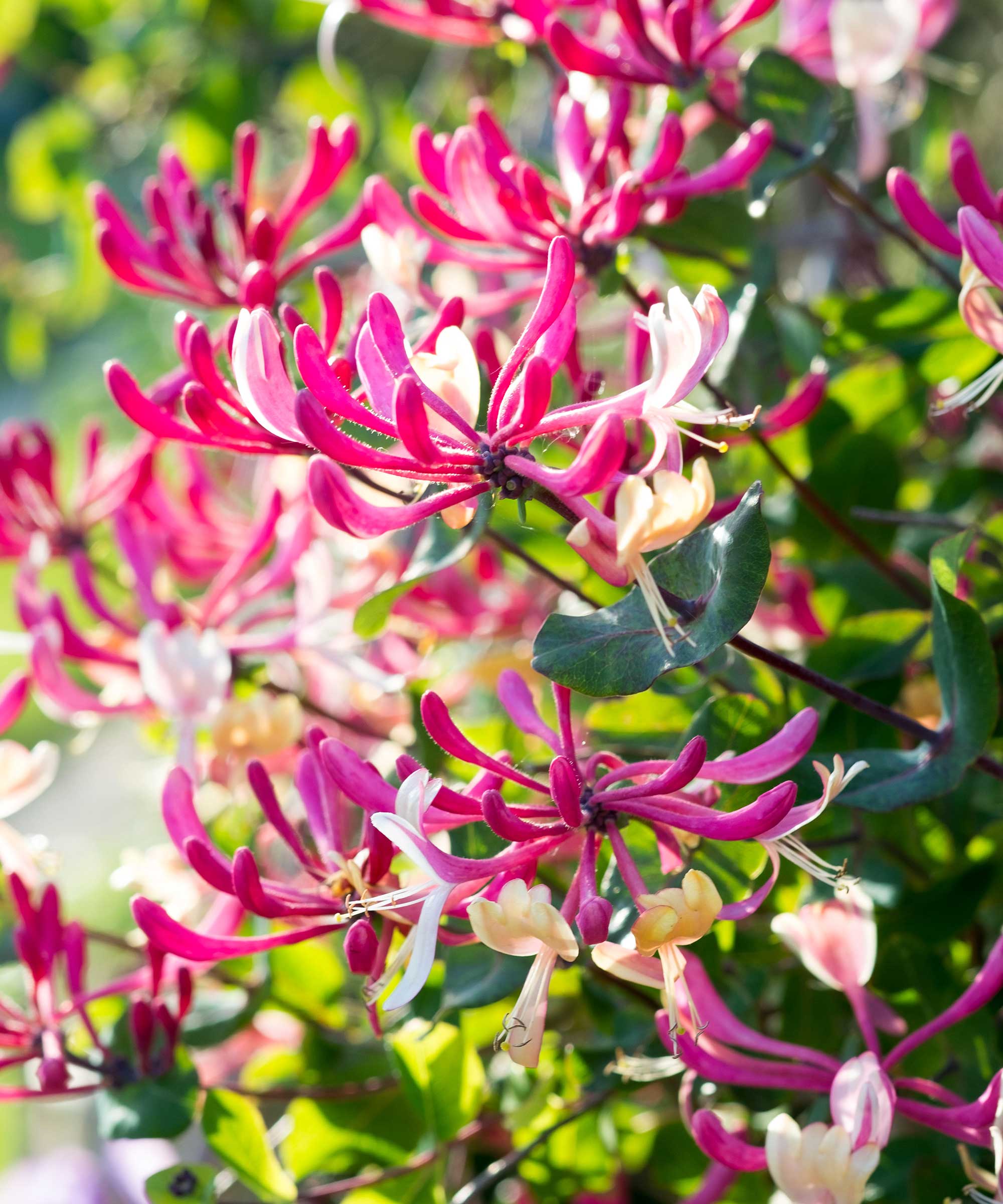
- Height: 5ft–19.7ft (1.5m–6m) or more
- Hardiness: USDA 5–9 (UK H6)
- Flavor: Honey-floral and bitter
As one of the best cottage garden plants, the blooms of honeysuckle certainly smell good enough to eat. The pink and gold flowers won't disappoint when they are simmered with sugar and made into a syrup which can be used to drizzle over summer desserts or used as a mixer with a summer cocktail. Add a drop of lemon juice to turn the syrup from an unappetizing green to blush pink. However, it's important to note that the red berries, which appear in autumn, are toxic.
Honeysuckle is a fast-growing shrub that will scramble over a fence or a shed, making it a pretty option for cottage garden ideas. It prefers moist soil and partial shade, and it will need a trellis for support. It can be planted at any time of year.
18. Borage (Borago officinalis)
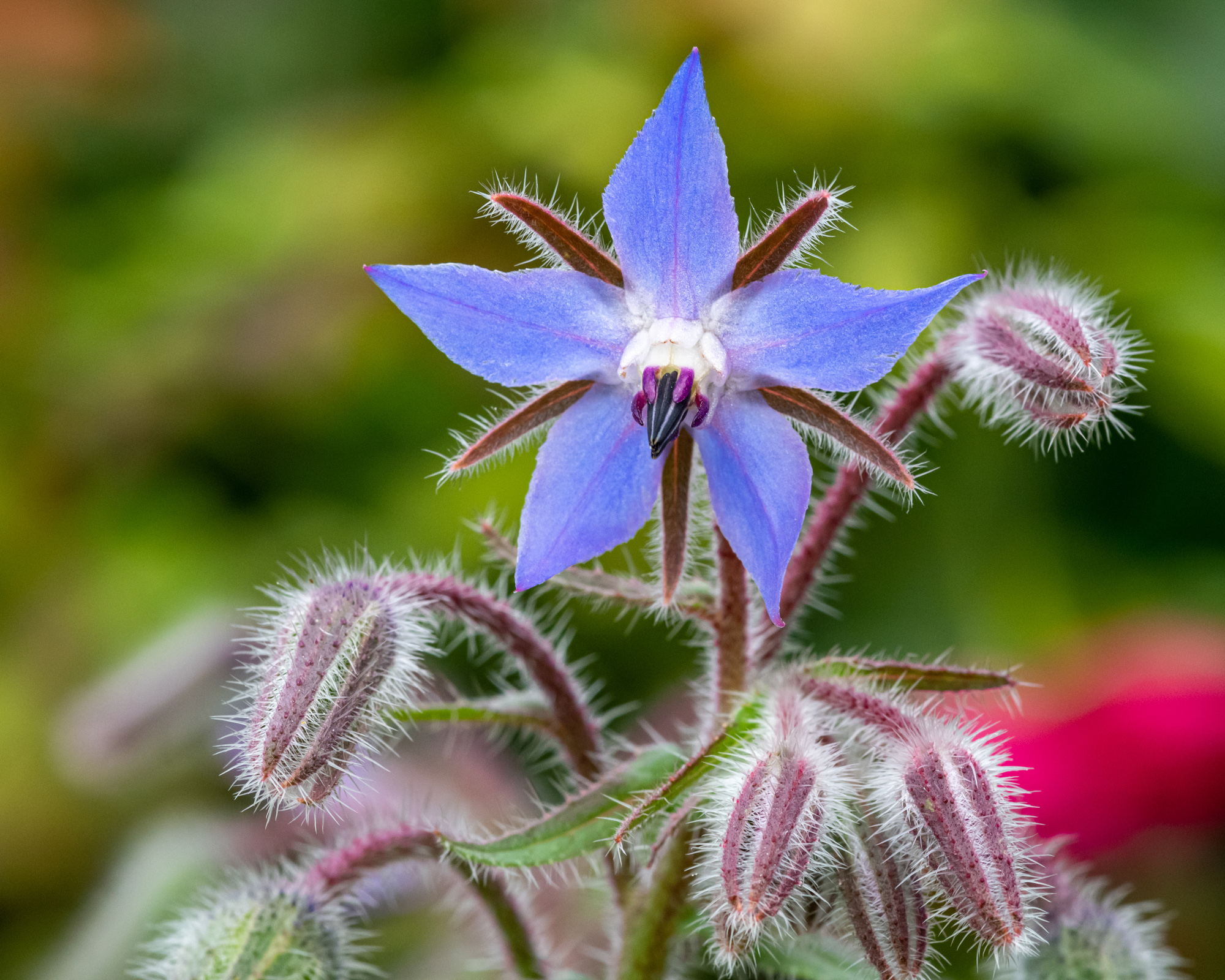
- Height: 3.3ft (1m)
- Hardiness: USDA 5–10 (UK H4)
- Flavor: Mild and cucumber-like
Its delicate cucumber flavor makes borage a delicious kitchen addition, suitable for tossing into salads, infusing refreshing drinks, or adding to cakes and cookies. The sapphire blue, star-shaped flowers create a splash of color in beds and borders, and bees love them.
Borage seeds can be sown directly into the ground in late spring. They are happy in thin, stony soil and will self-seed. Try scattering them into flower borders, or adding to a vegetable patch or your raised garden beds, so long as you don't mind if they spread.
19. Anise hyssop (Agastache foeniculum)

- Height: 3ft (0.9m)
- Hardiness: USDA 6–9 (UK H3)
- Flavor: Anise and mint
Anise hyssop's spires of blue flowers on dark green leaves with a distinctive licorice smell will look good in the border. And, they work well when poached with peaches, apricots, and berries.
Alternatively, try adding a handful to homemade ice cream or custard. And if you're eager to learn how to grow your own herbal tea, then this is a good one to try: the minty leaves make a delicious and soothing brew.
Sow the seeds direct into the ground in autumn, and they will flower the following year in mid-to-late summer. This plant prefers a sunny site in well-drained soil.
20. Forget-me-nots (Myosotis sylvatica)
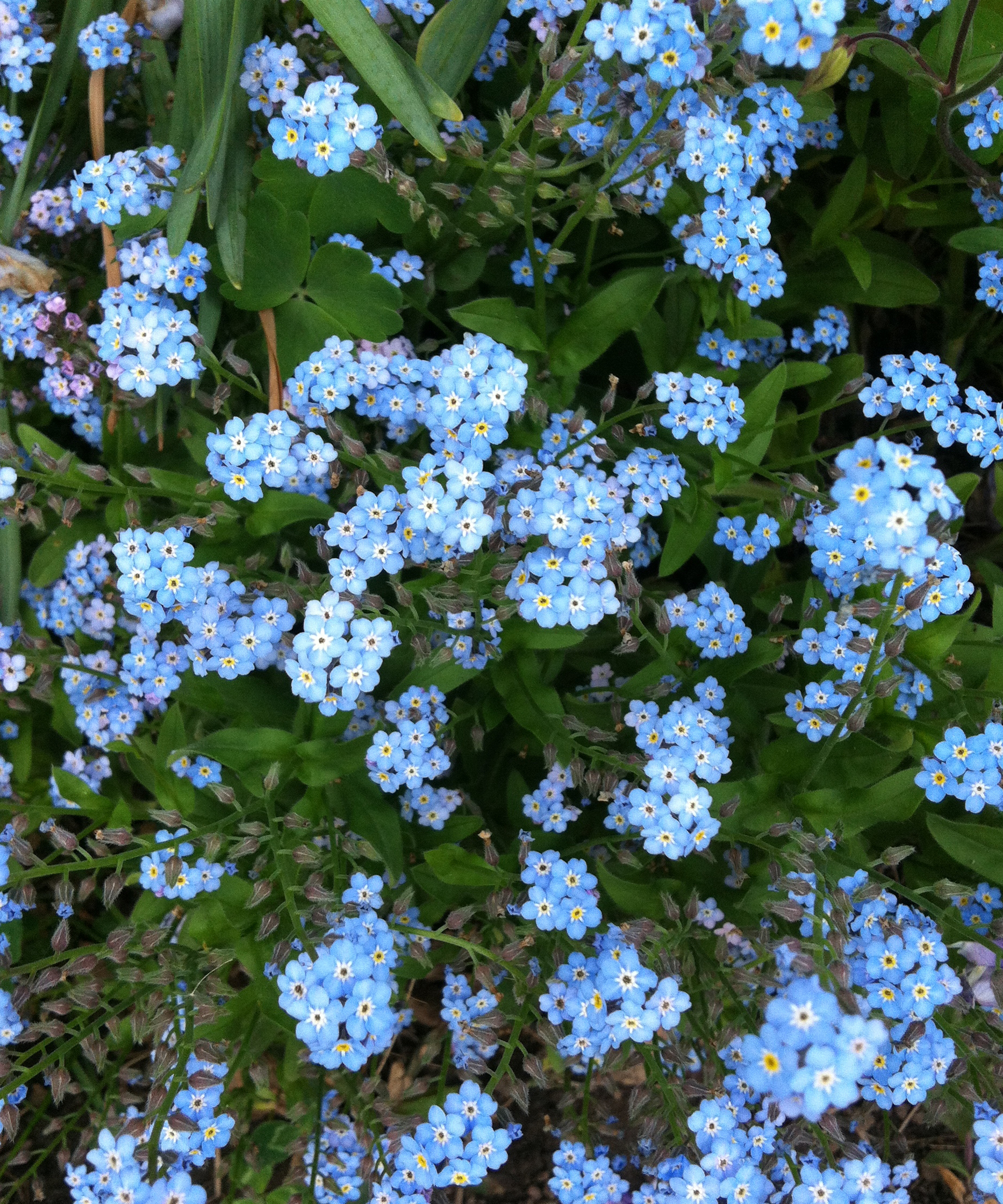
- Height: 1ft (0.3m)
- Hardiness: USDA 3–9 (UK H4)
- Flavor: Faintly sweet
These self-seeding plants will spread like wildfire once they have taken hold in the garden. But, as well as providing excellent ground cover, the tiny blue or pink flowers make the prettiest decoration for a birthday cake and a gorgeous garnish for a cordial.
They taste faintly sweet and will appear from mid-spring to early summer. Once picked, these tiny blooms won't keep, even in the fridge, so use them as soon as possible and enjoy their fleeting beauty and delicate flavor.
The seeds can be sown directly into the ground in late spring, early summer, or early fall.
21. Sunflowers (Helianthus)
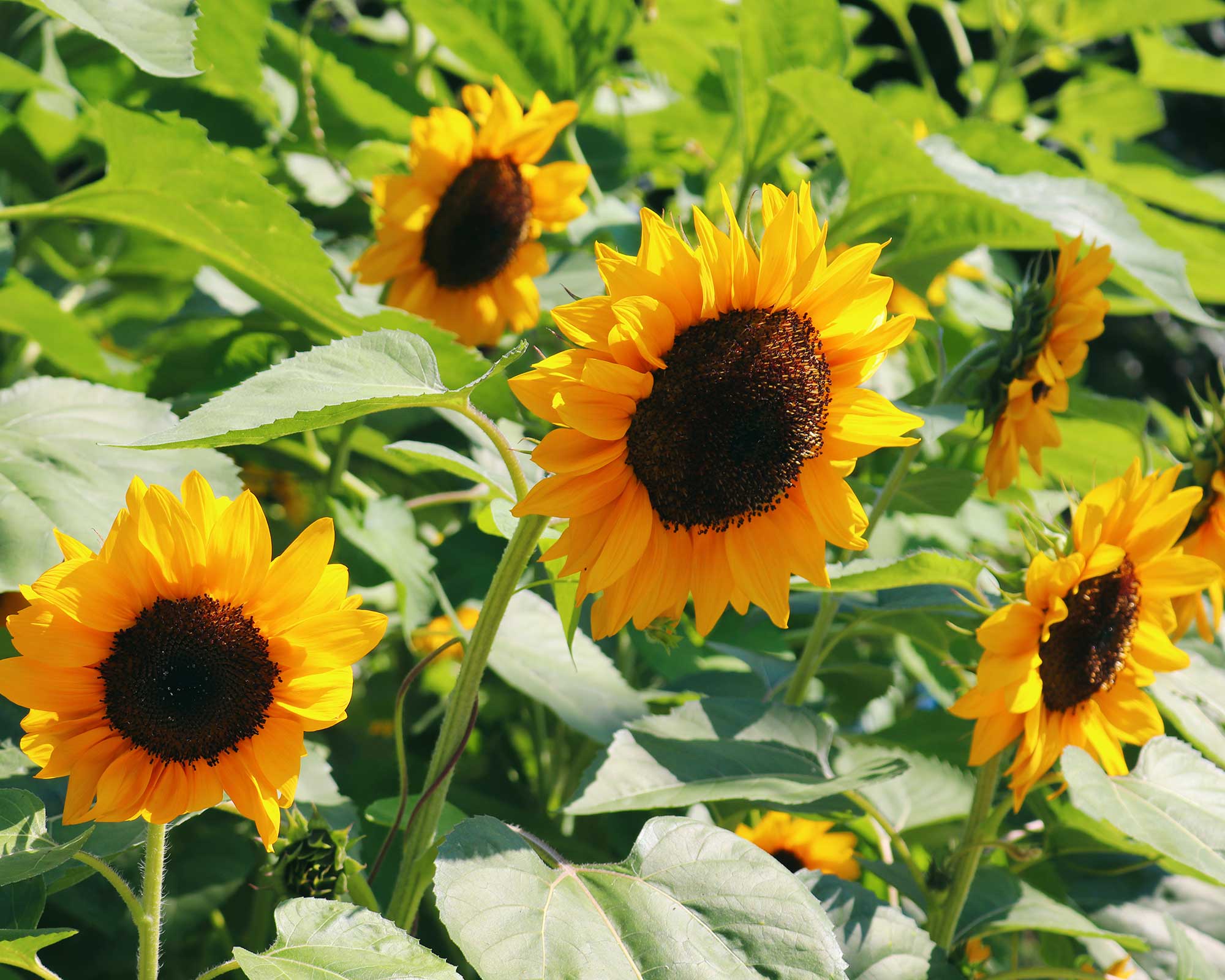
- Height: 3ft–13ft (90cm–4m)
- Hardiness: USDA 4–9 (UK H4)
- Flavor: Nutty
Most people know that sunflower seeds are a healthy snack, but the nutty-flavored petals are also a delicacy that is well worth a try. The buds can be blanched and eaten like artichokes, while the golden petals make a statement when added to a salad. They are also rich in vitamins A and C.
Sunflowers are simple to grow, in well-drained soil in full sun. Plant them in late spring and mulch with compost or manure to ensure that they grow tall and strong. You can find more tips on how to grow sunflowers in our guide.
22. Roses (Rosa)
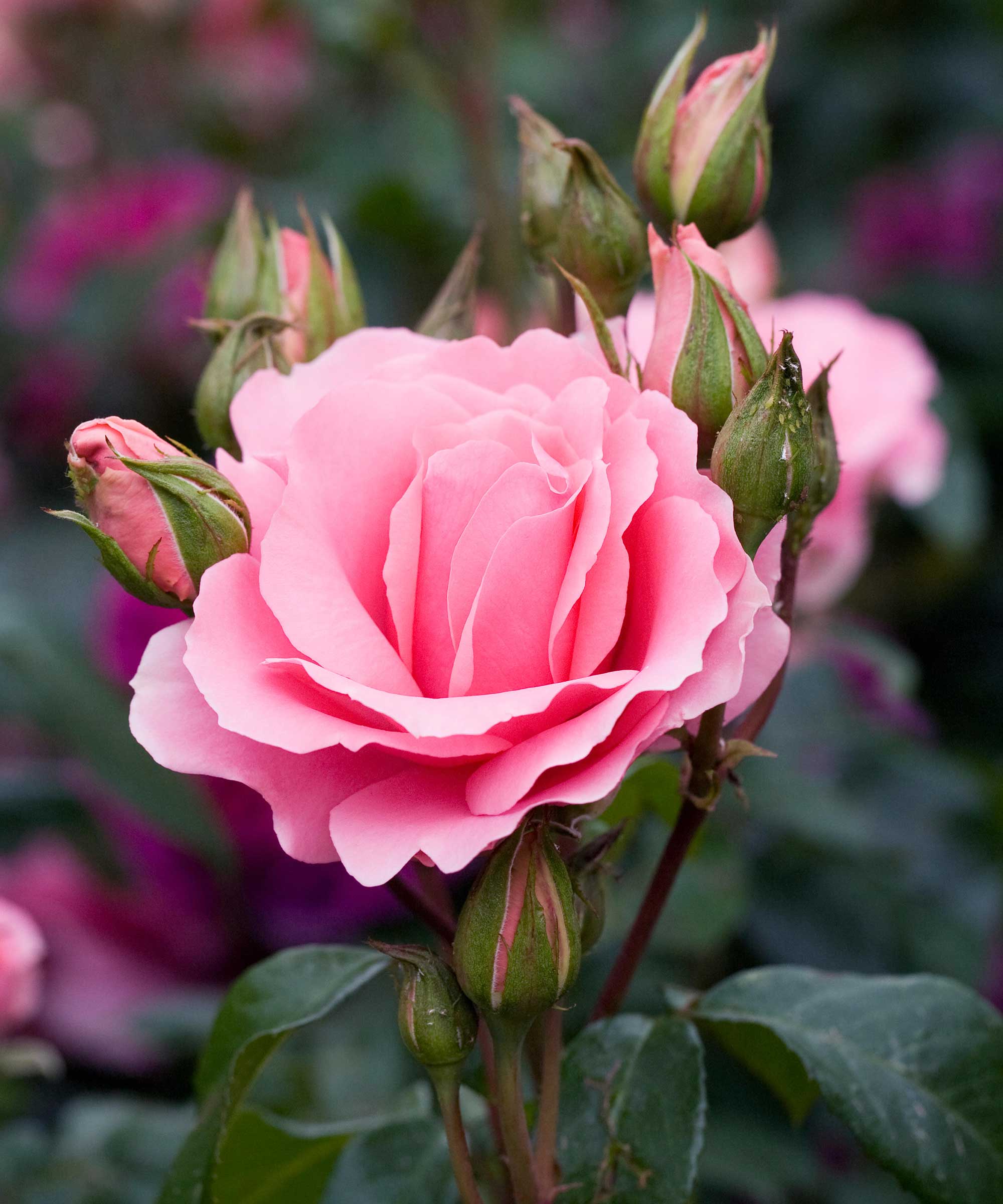
- Height: 1ft–20ft or more
- Hardiness: USDA 5–9 (UK H5–6)
- Flavor: Floral
Roses are a favorite summer bloom of many gardeners, bringing beautiful scent and a sense of romance to any flower bed or border. The petals have a wonderfully delicate, floral flavor, which makes them perfect for adding to sweet treats.
'To create a show-stopping centerpiece cake, coat a tiered sponge in butter icing and then add rose petals to cover it,' suggests Lucy Chamberlain of Amateur Gardening. You can also add them to drinks, mix them into fruit salads, or stir them into jams and jellies.
There are lots of types of roses to try – but as a general rule, the ones that smell the best will taste the best.
23. Chives (Allium schoenoprasum)

- Height: 12in (30cm)
- Hardiness: USDA 3–9 (H4)
- Flavor: Onion-like
Chives are a must-have if you're looking to create a herb garden. They're super easy to grow – just plant them in moist but well-drained soil and lift and divide the plants every few years to avoid them getting congested.
The flowers are excellent if you’d like to add a mild onion flavor to meals, especially if you find actual onions too harsh. Chop up the leaves to sprinkle alongside the pretty purple petals – they're particularly good on potato salads.

The garden was always a big part of Holly's life growing up, as was the surrounding New Forest where she lived. Her appreciation for the great outdoors has only grown since then. She's been an allotment keeper, a professional gardener, and a botanical illustrator – plants are her passion.
- Fiona CumberpatchFreelance writer
